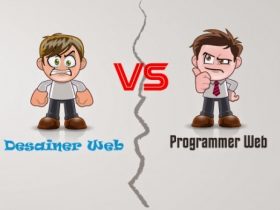In just a few years, we could see just how significant the web development and design trends may evolve. Other than new design styles, improved technological implementations can be added to modern websites. All of these new implementations could be aimed to improve accessibility and maintainability. Both website owners and users want a more dynamic form of online presence. The Internet is now based on community principles and that what’s fuelled the Web 2.0 movement. Regardless of the aim of our website, it should encourage the presence of a community. Although this may sound like a basic principle, it is actually an overlooked trend. We should be aware of the viability of our website.
Windows of opportunity amount web users are only measured in seconds. If people find that a website is too slow, they will simply close the browser tab. It is true that people are already using very fast Internet connection, but poor coding implementation could result in slow server performance.
In reality, it isn’t necessary for us to use only JPG files for our image representation. Many website designers are reluctant to use GIFs because they are seen as an archaic format. However, for monochrome design elements, GIF files are actually more efficient. JPEG may suffer from the presence of artifacts when used at higher compression ratio. Web designers should be more flexible when choosing the type of image files. JPG files should be used only for color-rich photographs and textured elements. They should experiment with other formats, such PNG to find out whether they can get good results without causing users to load heavy files.
PNG is known for its excellent compression ratio, even when compared to GIF. As an example, an 8-bit PNG file usually has smaller file size than an 8-bit GIF. Despite this fact, PNG files continue to be somewhat underutilized in the web design area. There are different trade-offs that we can choose. It’s much better than using JPG for all design elements in our website. PNG comes with lossless representation that we can easily use in our website.
Highly-compressed JPG isn’t always a good thing for resizable imagery on our website. However, we should be able to use CSS with a small-sized image as faux-backgrounds that are distributed all across the platform. CSS platform should be able to cover the whole viewing area of our web browser. Our goal is to create a highly consistent experience for end-users, regardless of what screen resolution we use. This is a common technique that is used by many web designers. We should be able to use small-sized images for many purposes. Mobile devices are now used by many people to open websites.
Because many users are already using 3G or 4G data connection, we don’t need to be too concerned with the overall size of our mobile website; but it is still important that the visual representation looks consistent and acceptable on the small display. This is something that we really need to consider.






















